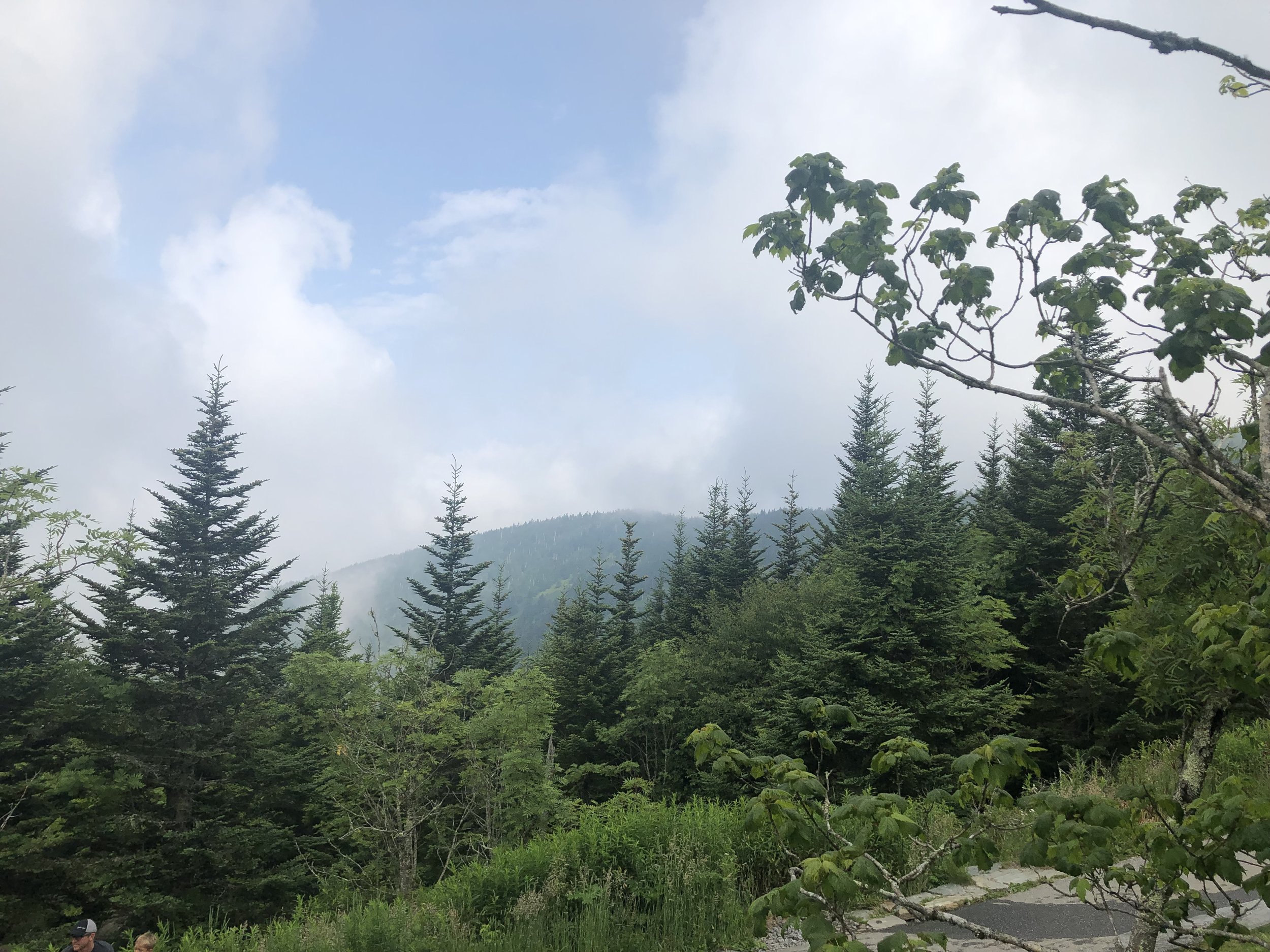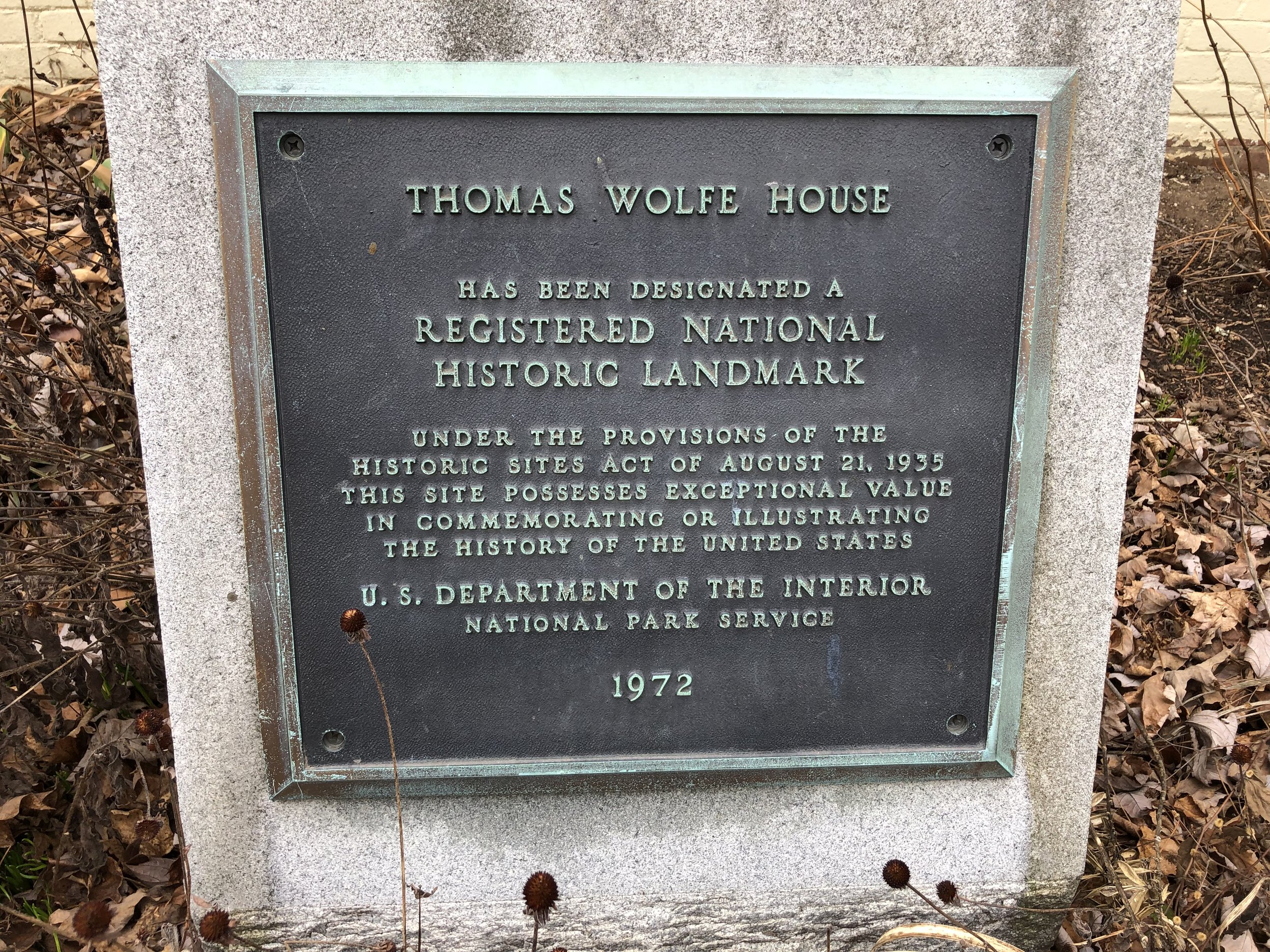Clingmans Dome
From birth until about three weeks before my 26th birthday, I was a citizen of the state of North Carolina. Since last year, I am once again a citizen of North Carolina. Although I lived in Georgia for the longest period of my life (33 years), I have a soft spot for North Carolina, primarily because it was my home during my formative years. I know its history better than I know the history of any of the other three states in which I have lived, and that history, at least during my childhood, revealed one big inferiority complex.
My seventh-grade NC history textbook was unsparing. Compared with Virginia or South Carolina, we lagged behind in terms of shipping. We had only one major port. We did not have enough inlets into the sounds, and the sounds were shallow. We suffered periods of poor leadership. We were slow to adopt a system of public education, and during my youth, the teachers were woefully underpaid. (Compared with the state of Georgia, they still are.) We suffered from a lack of decent roads and railroads.
If you have ever seen the movie 1776, you get a hint of an inferiority complex in the North Carolina delegates to the Second Continental Congress. The North Carolina delegate who had a speaking part in the movie was Joseph Hewes. Votes were taken by colonies, each colony casting one vote only. The roll was called in alphabetical order, but every time the NC delegates were called upon, Hewes deferred to South Carolina, and ultimately voted exactly the same way as Edward Rutledge of SC.
And let us consider our presidents. The first North Carolinian elected to the White House was Andrew Jackson, born in North Carolina but recognized by Tennessee because he moved there as a young man. He gave us the Trail of Tears. Our second was James K. Polk, born in the Charlotte area and educated at UNC, but also recognized as a Tennessean because that is where he began his political career. He is the only president of the United States to have been a former Speaker of the House of Representatives. The third was Andrew Johnson, whose birthplace, a log cabin, was on the NC State University campus the last time I visited there (some 45 or 50 years ago). He, too, moved to Tennessee, and we are quite happy to let Tennessee have him, given that he was a drunk and the first president to be impeached. This was back when impeachment was a rare thing, and actually meant something.
Even our liquor laws are near-verbatim copies of Virginia liquor laws.
Because of this complex, North Carolinians of my childhood bragged about whatever we could. We were not a completely backward state. We had fine universities and an outstanding research park. Why, we even claimed the oldest public university in the land! The University of North Carolina at Chapel Hill was the first public university in the country to hold classes and produce graduates, but even that title is contended: the University of Georgia was chartered before UNC. We had the very first flight of a heavier-than-air craft that took off and landed under its own power! The fact that the inventors were from Ohio didn’t seem to matter. We rid the world of the pirate Blackbeard! The fact that we harbored him for years is hardly mentioned. We revered the few celebrities who came from North Carolina. This explains my fascination with Ava Gardner, who was born in the same county as yours truly, and now lies buried there. And, of course, Andy Griffith is proudly claimed by us.
But Mother Nature smiled on us and gave us solid reasons to brag. We have Mount Mitchell (6,684 feet elevation), the highest mountain east of the Mississippi, and by logical extension, east of the Rocky Mountains. Mount Craig is a close runner-up to stately Mount Mitchell (6,647 feet elevation), just about a mile down the road from Mount Mitchell, the second-highest peak east of the Rockies. And to rub salt in an open wound, we also have number three: Clingmans Dome, at 6,643 feet. To be sure, Clingmans Dome straddles the North Carolina/Tennessee state line, but the summit is in North Carolina, by just a few feet.
We have it on our calendars to visit all three. We began with Clingmans Dome. And, if any of my high school English teachers happen to read this, no, I did not leave out an apostrophe. This is the official name of the peak.
Thomas Lanier Clingman was a politician, a scientist, and an explorer who, along with UNC professor Elisha Mitchell, measure the elevation of various mountain peaks in western NC. The official guide published by the Great Smoky Mountains Association fails to mention Clingman’s later adventures, that of Confederate General in the Late Unpleasantness, which means that, sooner or later, the mountain will be renamed, as we continue to commit the sin of contemporaneity. But I digress.
We used to own a mountain home in Gatlinburg and to get to that home from Madison, GA, we took US 441 through Cherokee and the Great Smoky Mountains National Park. The road to Clingmans Dome intersects US 441 in the park and is about 7 miles long. As many times as we rode by that intersection, we never made the side trip to the Dome: we were always in a hurry to get to our destination. Now we live in Asheville, and Clingmans Dome is about 80 miles from home. It was an easy trip.
The only slight disappointment was the weather. Those of you suffering through the heat wave would appreciate the 65-degree Fahrenheit temperature we experienced at the summit, but that cool temperature was a result of the low-lying clouds that created visibility problems. Still, the visibility did not interfere with our enjoyment of the day.
The observation tower is the unique architectural landmark at Clingmans Dome. It is about 45 feet tall (which means that the observation tower is about four feet taller than the summit at Mount Mitchell), and you reach the tower by going up a spiral ramp that rises at about a 12% grade. To get to the ramp, you hike a good little way up a grade that is a good bit steeper than 12%. It is not the toughest hike I have ever undertaken, but it could be tough if you have physical ailments.
On a clear day you are supposed to be able to see 100 miles from the tower. We could not see anywhere near that distance. Twenty miles would have been a stretch.
The only downside to this little trip is that dogs are not allowed at the summit, on the path to the summit, or for that matter, on most trails in the Great Smoky Mountains National Park. We had to leave poor Lucy home this day.
I hope you enjoy the pictures below.
Every now and then the clouds lifted a little.
Kathy seems to be managing the hike to the summit very well.
The path to the summit was well paved, but, unfortunately, not level.
A view from the observation tower.
A look back at the spiral ramp.
Clingman’s grave is in the Riverside Cemetery, Asheville.



















































